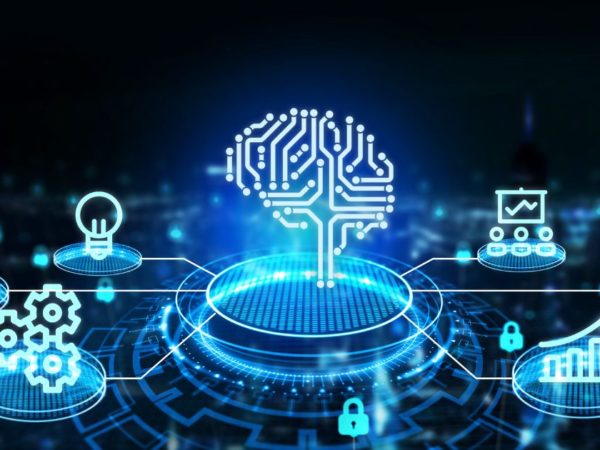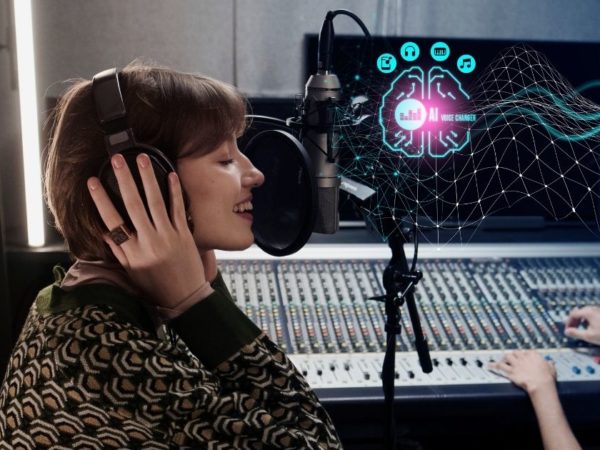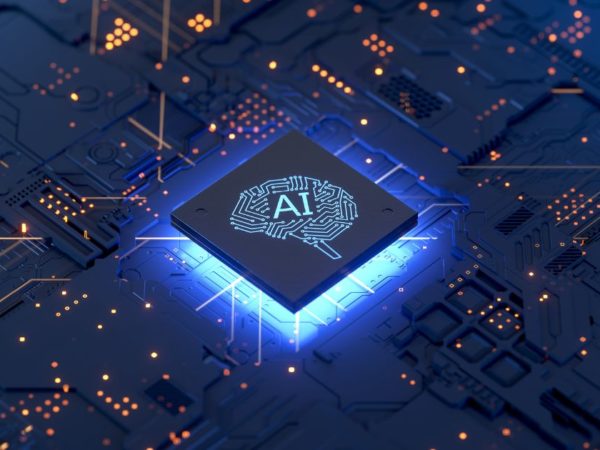Neural networks were developed in an attempt to replicate the intricate connections of neurons of the human nervous system.
It was thought that since the biological nervous system was so efficient in relaying and processing signals, it could help create human-like intelligence for machines.
This led to the creation of a network of artificial neurons that can process and transfer data just like a cluster of neurons in the human brain.
This provided a greatly enhanced capacity for machines to learn and respond intelligently, hence, the birth of neural networks.
In this article, I will discuss neural networks, how they work, their advantages, and other important aspects.
Let’s start!
What Are Neural Networks?
Neural networks or artificial neural networks (ANNs) are a part of artificial intelligence (AI) and machine learning (ML) that teaches machines/computers to process information like the biological brain. The network has an adaptive system that allows it to learn from its previous activities and keep improving.
Neural networks are a subgroup of machine learning, and their core is developed using deep learning algorithms. The name “neural network” is inspired by the intricate network of neurons in the human brain and how the neurons communicate.
The neural network uses its training data as input to support learning and enhance its abilities. It provides constant learning from past data with increasing accuracy, making it a powerful, modern tool.
The history of neural networks can be traced back to the first era of computers. The first instance of a neural network was designed by Warren McCulloch as a circuit system that can approximate the human brain function.
In 1958, the first instance of artificial perception was developed by Frank Rosenblatt. In 1982, a paper was published on “recurrent neural networks” by John Hopfield. Neural networks were extensively used in 1988 in the field of protein study.
The technology was used to predict the three-dimensional shapes of the proteins. By the year 1992, an algorithm for recognizing 3D objects was developed.
At present, neural networks have become highly advanced. They are used in multiple sectors, from healthcare, aerospace, and defense to cybersecurity, marketing, and weather predictions.
How Do Neural Networks Work?
As explained above, the development of the neural network was inspired by the human brain in terms of neural architecture. The neurons of a human brain can create a complex and highly interconnected net through which signals are sent and information is processed. This acts as the function of the neurons that are being replicated by neural networks.
The basic method by which neural networks function is through the interconnectedness of multiple and different layers of neurons within the network. Each neuron is connected to another via a node.
It can receive an input from the layer before it and send an output that passes on to the layer afterward. This step keeps on repeating until a decision or prediction has been made by the final layer.
The working of the neural network can be better understood in terms of the individual mechanisms of each layer of the network through which the data passes and is processed. In a basic structure, there are three layers – input, hidden, and output.
Input Layer
This layer of the neural network is responsible for collecting data from the outside world. After the data is collected, the layer also processes that data analyzes the content of the data, and adds a category to the data for better identification. It then sends the data to the next layer.
Hidden Layer
Data from the hidden layer comes from the input layer and other hidden layers. There can be a large number of hidden layers in the neural network. Each of the hidden layers can analyze an input that is passed from a previous layer. The input is then processed and then passed on further.
Output layer
The data passed on from the last hidden layer reaches the output layer. This layer shows the final output from the data processing that occurs in the previous layers of the neural network. The output layer can have one or more nodes based on the input.
For example, when dealing with binary data (1/0, Yes/No), a single output node will be used. But, while dealing with multi-category data, multiple nodes will be used.
The hidden layer is essentially the deep learning network of interconnections between several nodes. The node connection is represented by a number called “weight”. It represents how much the node can influence other nodes. A positive value indicates the ability to excite another node, while a negative value indicates the ability to suppress another node.
Types of Neural Networks
For different types of uses and data, different types of neural networks are applied, each having different architecture. Here are some of the types of neural networks:
#1. Feed Forward Network
In this type of neural network, multiple interconnected hidden layers and neurons are present. Here, the flow of the information is only in the forward direction with no backpropagation, hence the name “feedforward”. A larger number of this layer helps in weight customization; and hence, learning.
#2. Perceptron
This is the most basic form of network that consists of only 1 neuron. The neuron applies an activation function to the input to get a binary output. It essentially adds the input value and the node’s weight and passes the sum to the activation function to create the output. Hidden layers are absent in this type of network.
#3. Multi-Layer Perceptron
This type of neural network allows backpropagation which is not supported in the feed-forward system. This incorporates several hidden layers and activation functions that allow bidirectional data flow. Inputs get forward propagated while weight updates are backward propagated. Based on the target, the activation function can be changed.
#4. Radial Basis Network
This network category uses a layer of Radial Basis Function (RBF) neurons between the input and output layers. These neurons can store the classes of the different training data, thereby using a different way to predict targets. The neuron compares the Euclidean distances with actually stored classes from the feature value of the input.
#5. Convolutional Network
This neural network contains multiple layers of convolutions that identify important features from inputs such as pictures. The first few layers focus on low-level details, while the subsequent layers focus on high-level details. A custom matrix or filter is used by this network to create maps.
#6. Recurrent Network
This network is used when there is a requirement to get predictions from a given data sequence. It can take time-delayed inputs of the last prediction. This is stored within the RNN data cell, which in turn, acts as a second input used for the prediction.
#7. Short-Term Memory Network
In this type of neural network, an additional special memory cell is used to save information for a longer duration and overcome the problem of Vanishing Gradients. Logic gates are used to identify the outputs that need to be used or discarded. Thus, the three logic gates used in this are – Input, Output, and Forget.
Benefits of Neural Networks
Neural networks offer a lot of benefits:
- Because of its structure, it can process data and learn complex and nonlinear relationships about the real world and generalize its learning to create new outputs.
- Neural networks do not have restrictions on the inputs. Thus, these can model heteroskedasticity through which it can learn about hidden relations between the data.
- A neural network can store data across the entire network and work on insufficient data. This creates data redundancy and reduces the risk of data loss.
- Because of having redundant connections, it’s capable of processing multiple data simultaneously and in parallel. This means neural networks can help conduct multiple functions at the same time.
- The ability to adjust the data processing gives it strong fault tolerance and trains itself to improve constantly.
- Since the network uses distributed memory, it’s resistant to data corruption.
- It can learn from past events, based on which it can train machines to make better decisions.
Applications of Neural Networks
- Predicting Stock Market Performance: Multilayer Perceptron is often used to predict stock market performance and prepares for stock market changes. The system makes forecasts based on profit ratios, annual returns, and past performance data from the stock market.
- Facial Recognition: Convolutional networks are used to run a facial recognition system that matches a given facial ID with a list of facial IDs on the database to show up a positive match.
- Studying Social Media Behaviour: Multiplayer Perceptron can be used to study people’s behavior on social media from virtual conversations and social media interactions. This data can be used in marketing activities.
- Aerospace Research: Time delay networks can be used in various fields of aeronautics, such as pattern recognition, securing control systems, high-performance autopiloting, diagnosis of aircraft faults, and developing simulations. This helps enhance safety and security practices in the industry.
- Defense Planning: Defense strategies can be accessed and developed using neural networks. The technology can be used to predict defense risks, control automated equipment and identify potential spots for patrol.
- Healthcare: The network can be used to create better imaging techniques for ultrasound, CT Scans, and X-rays. This can also help in better recording and tracking of patient data.
- Identity verification: Patterns in handwriting can be identified using neural networks. This can help identify potential evidence of forgery through handwriting and signature verification systems.
- Weather forecasting: Data from weather satellites can be used for dynamic modeling and forecasting weather patterns with higher accuracy. This can help create an early warning of natural disasters so that preventive measures can be taken in time.
Learning Resources
#1. Deep Learning A-Z by Udemy
Deep Learning A-Z by Udemy will help you learn how to use Python and create Deep Learning Algorithms. The duration of the course is 22 hours and 33 min.
The course will teach students to:
- Better understand the concepts of AI, neural networks, self-organizing maps, Boltzmann Machine, and autoencoders.
- How to apply these technologies to practice in the real world.
The price of the course is $39.98.
#2. Data Science by Udemy
Data Science is an excellent course on deep learning and neural networks that gives in-depth coverage of neural network theories used in machine learning. This course is also offered by Udemy. Its duration is of 12 hours.
The course will teach:
- About deep learning and neural network function
- Develop code for neural networks from scratch
The price of the course is $35.13.
#3. Building Neural Networks by Udemy
The Udemy course Building Neural Networks in Python from scratch enables the learner to develop deep learning and machine learning using gradient descent and linear regression. The duration of the course is 3 hours and 6 mins.
The course will teach:
- About the basic functions of neural networks like linear regression, backpropagation, and cost function
- To train neural networks, classify them, adjust their learning rates, normalize inputs, and optimize their accuracy.
The price of the course is $31.50.
#4. Neural Networks and Deep Learning by Coursera
The course Neural Networks and Deep Learning is offered by Coursera. This is the first course to specialize in Deep learning and focuses on foundational concepts. The duration of the course is 25 hours.
The course will teach:
- To become familiar with important technological trends that are driving the development of deep learning
- Learn how to train deep learning and use them to develop a fully connected network.
This course is offered free of cost.
#5. Building Advanced Deep Learning and NLP
The course, Building Advanced Deep Learning and NLP, is offered by Educative. The course takes about 5 hours to complete.
The course will teach:
- Work in hands-on coding environments
- Learn about concepts in deep learning and practice on projects related to Natural Language Processing (NLP) and advanced deep learning
The price of the course is $9.09 per month.
#6. Neural Network Projects with Python:
This book by James Loy is an ultimate guide on how to use Python and discover the power of artificial neural networks. It will make you learn and implement neural networks with the help of six projects in Python using neural networks. Completing this project will help you build your ML portfolio.
The course will teach:
- Neural network architectures such as LSTM and CNN
- To use popular libraries like Keras
- Projects involve sentiment analysis, face identification, object detection, etc.
#7. Neural Networks and Deep Learning
This book by Charu C. Aggarwal covers modern and classical models in deep learning. It will teach you the algorithms and theory of deep learning and neural networks so that you can apply them in several applications.
It also covers applications like recommender systems, image captioning and classification, text analytics, machine translation, gaming, and more.
You will learn:
- Neural network basics
- Fundamentals of neural networks
- Advanced neural network topics like GANs, neural Turing machines, etc.
Conclusion
Neural Networks are essentially a part of AI that supports learning in a manner that is close to human intelligence. These comprise multiple layers, each with its own function and output. Given their benefits like accuracy, data processing capabilities, parallel computing, etc., the applications of neural networks are rising in multiple sectors for making predictions and smarter decisions.
You may also explore convolutional neural networks.
![Kirelos Blog Introduction to Neural Networks [+ 7 Learning Resources] Introduction to Neural Networks [+ 7 Learning Resources] AI](https://kirelos.com/wp-content/uploads/2023/02/23761/introduction-to-neural-networks-7-learning-resources-950x358.png)


